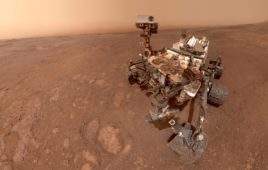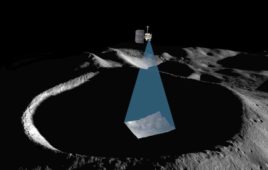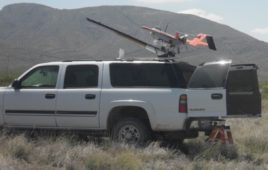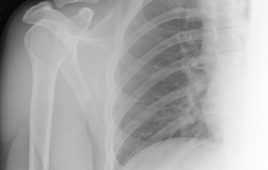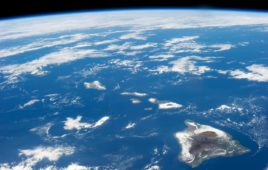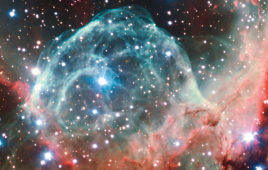A clever use of non-science engineering data from NASA’s Mars rover Curiosity has let a team of researchers, including an Arizona State University graduate student, measure the density of rock layers in 96-mile-wide Gale Crater. The findings, to be published February 1, 2019, in the journal Science, show that the layers are more porous than scientists…
Protein Made to Conduct Electricity Like a Metal
When pushing the boundaries of discovery, sometimes even the most experienced of scientists can get a surprise jolt from a completely unpredictable result. That was the case for ASU Regents’ Professor and biophysicist Stuart Lindsay, who has spent his career building new microscopes that have become the eyes of nanotechnology and next-generation, rapid and low-cost…
NASA Selects ASU’s ‘ShadowCam’ To Fly On Korea Pathfinder Lunar Orbiter
NASA has selected an instrument developed by Mark Robinson of ASU’s School of Earth and Space Exploration (SESE) and Malin Space Science Systems (MSSS) to map the terrain and search for evidence of frost or ice deposits in the Moon’s permanently shadowed regions (PSRs). The instrument, named “ShadowCam,” will be a U.S. contribution to the…
Drones Give Scientists New Self-Service Approach
Earth and environmental scientists have often had to rely on piloted aircraft and satellites to collect remote sensing data, platforms that have traditionally been controlled by large research organizations or regulatory agencies. Thanks to the increased affordability and dramatic technological advances of drones, or Unmanned Aerial Vehicles (UAVs), however, earth and environmental scientists can now…
Largest Flexible X-Ray Detector Manufactured with Film Transistors
The Flexible Electronics and Display Center (FEDC) at Arizona State University and PARC, a Xerox company, announced today that they have successfully manufactured the world’s largest flexible X-ray detector prototypes using advanced thin film transistors (TFTs). Measuring 10 diagonal inches, the device has been jointly developed at the FEDC and PARC in conjunction with the…
Volcanic Rocks Hold Clues To Earth’s Interior
The journey for volcanic rocks found on many volcanic islands began deep within the Earth. Brought to the Earth’s surface in eruptions of deep volcanic material, these rocks hold clues as to what is going on deep beneath Earth’s surface. Studies of rocks found on certain volcanic islands, known as ocean island basalts, revealed that…
Researchers To Study Thermonuclear Reaction Rates To Determine How Much Of Certain Elements Exploding Stars Can Produce
We are all made from stars. And that’s not just a beautiful metaphor. Apart from hydrogen, as many have heard from the Carl Sagan and Neil DeGrasse Tyson Cosmos series, every ingredient in the human body is made from elements forged by stars. The calcium in our bones, the oxygen we breathe, the iron in…
Designing Crack-Resistant Metals
Potential solutions to big problems continue to arise from research that is revealing how materials behave at the smallest scales. The results of a new study to understand the interactions of various metal alloys at the nanometer and atomic scales are likely to aid advances in methods of preventing the failure of systems critical to…
ASU Graduates Create Medical Device to Cure Jaundice
Arizona State University engineering graduates and students are involved in a start-up venture based on new technology the company’s founders developed to help cure jaundice in newborn children. Jaundice affects six out of 10 newborn babies, and more than 12,000 worldwide die each day if not treated. The founders of the company, NeoLight, are Chase…
Researchers Produce Nanostructures with Potential to Advance Energy Devices
New types of nanostructures have shown promise for applications in electrochemically powered energy devices and systems, including advanced battery technologies. One process for making these nanostructures is dealloying, in which one or more elemental components of an alloy are selectively leached out of materials. Arizona State University researchers Karl Sieradzki and Qing Chen have been…

